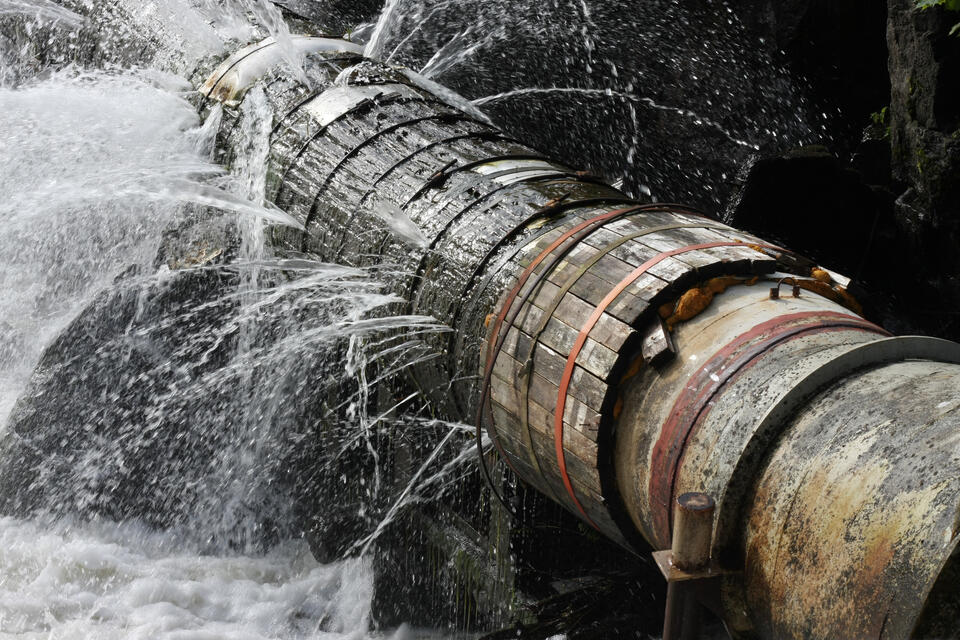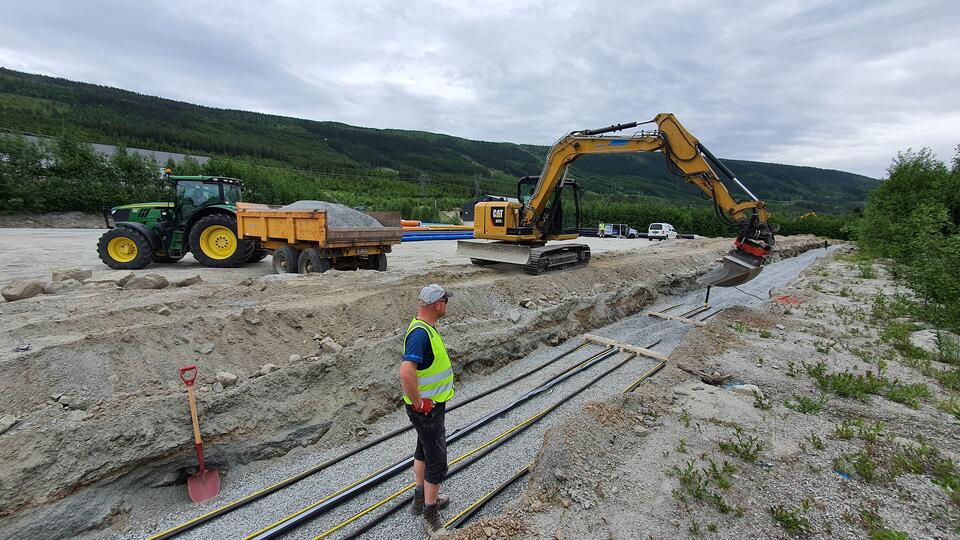Detecting Water Leaks with Fiber Technology

At NORSAR, we are continuously testing and developing technologies to utilize our expertise in vibration measurement and fiber optics for purposes of social benefit. Over the previous few years, we have investigated the possibility of using fiber optic sensing technology to detect water leaks in the pipeline network. The results are promising.
Cost-effective solution
Norway is among the countries of Europe with the largest share of drinking water loss during transportation from source to consumer, with approximately 30% lost according to SSB. The cost to society is significant – approximately 354 million NOK per year, estimated by Norsk Vann. The primary cause of the water loss is leaks in the aging water pipes. In an attempt to address the challenge, NORSAR, in the period from 2019-2023, has researched the possibility of using fiber optic sensing technology to identify the leaks. This technology is a cost-effective method that measures vibrations over long distances with great accuracy.
How does fiber optic sensing work?
Distributed Acoustic Sensing (DAS) is a technology that uses regular fiber optical cables made for telecommunication purposes to detect vibrations in the ground. The system uses a so-called interrogator, which, using laser beams, registers the tiniest of vibrations in the optical fiber cable. These measurements provide continuous and accurate localization of the vibrations along the whole length of the cable. One of the most significant advantages of DAS technology is its high spatial resolution, being capable of achieving a measurement sampling density as low as one meter over a stretch of up to 170 kilometers. Another advantage of this technology is its ability to utilize existing fiber optic cables. Norway has a well-developed network, with approximately 90% of the population living near a fiber optic network that is possible to connect to.
This methodology is not entirely new: DAS technology has been used to monitor pipelines in the petroleum industry for over a decade. However, even though the technology has been well established within that sector, there are significant differences between pipelines, contents, and pressure contexts, which necessitates further development of the existing technology to be suitable for use in water distribution networks.
Results from testing and trials
In collaboration with Hallingplast, NORSAR has made a full-scale test site in Ål, Hallingdal to develop and test methods for detecting leaks in water pipes. Additionally, extensive testing of the technology has been conducted in partnership with IVAR and through the research project LeakNor. We have also performed tests on existing pipeline networks.
 Construction of the Hallingplast test site. Photo: NORSAR
Construction of the Hallingplast test site. Photo: NORSAR
The results show that it is possible to detect leak signatures using DAS technology. However, the quality of the observations is influenced by several factors, such as the distance between the fiber cable and the pipe or leak, the size of the leak, the water pressure, and ground conditions. Moreover, testing in controlled environments has given more reliable results than under natural conditions.
A major challenge in using existing fiber networks to detect water leaks is that fiber cables often do not run in the same trenches as water pipes. Additionally, getting access to dark fibers near water pipes from operators may be a challenge.
Need for further research
Based on our findings, we believe that DAS technology has the potential to become a commercial method for detecting water leaks. However, further research and technology development are needed to address the specific challenges related to water distribution networks.
Contact us for collaboration or more information
If you are interested in collaborating with us or want more information about our research on fiber optic sensing, please feel free to get in touch.
